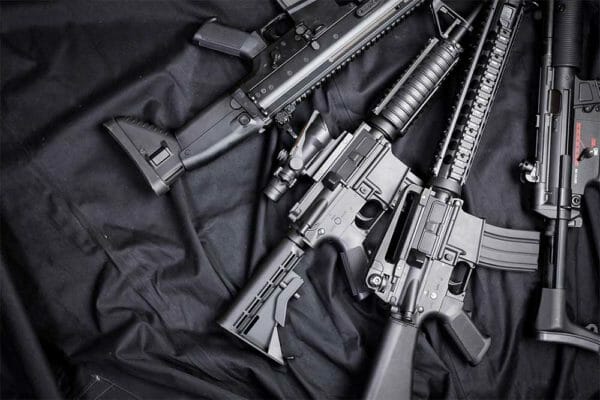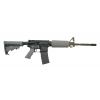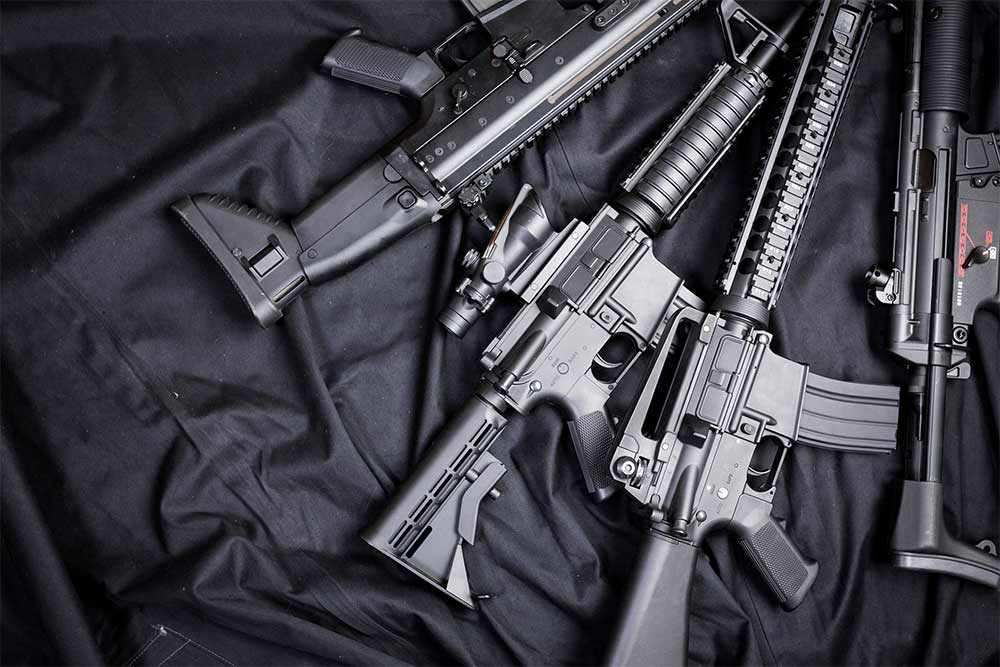Opinion
The United States Court of Appeals for the Fourth Circuit in Bianchi v. Brown issued an important order that is likely to backfire on the anti-gunners.
The court directed the parties to submit supplemental briefing addressing the following two questions:
- (1) does the determination of whether a weapon is “in common use” occur at the first or second step of Bruen’s text-and-history methodology, and
- (2) who bears the burden of establishing that a weapon is in common use. Heller and Bruen provide explicit answers to the questions posed by the Fourth Circuit, and those answers favor the protection of our Second Amendment rights.
Bianchi challenges the constitutionality of Maryland’s “assault weapons” ban, which seeks to outlaw the AR-15, among other semiautomatic firearms.

Tellingly, the original Fourth Circuit panel in Bianchi seemed poised to issue a pro-Second Amendment ruling, but before that occurred, the Fourth Circuit took the case en banc likely to avoid the possibility of such an outcome.
Bruen instructs that the constitutional inquiry starts with the text of the Second Amendment. This means that, at the outset, a lower court must determine whether the object of a firearm’s regulation is an “arm.”
At this first step, Bruen instructs that the burden is on the party challenging the firearms regulation to show that the item being banned is an “arm.” Heller defined “arms” as “weapons of offense or armor of defense.” There is no doubt that AR-15s and other semiautomatic rifles subject to the Maryland ban are “arms,” which means that the burden shifts to the government to show that the arms it seeks to ban are not “in common use” by Americans for lawful purposes (or are dangerous and unusual).
Bianchi is an “arms ban” case in the same way that Heller was an “arms ban” case, which struck down D.C.’s ban on owning a handgun, was an arms ban case. Heller provides the constitutional test to be applied by the lower courts in arms ban cases, and that is the “in common use” test.
There is a reason that the Fourth Circuit in Bianchi asked the parties to address when the “in common use” test comes into play.
If the “in common use” analysis occurs at the plain text level (text-first), the burden would be on the pro-Second Amendment plaintiffs to demonstrate that an arm is in common use. If, however, the inquiry occurs at the historical level (history-second), the burden rests on the government to prove that an arm is dangerous and unusual.
The anti-gun movement desperately wants the “in common use” analysis to occur at the plain text level where the party challenging the firearm regulation has the burden, but that is entirely contrary to the Supreme Court’s holding in Heller. How do we know? It’s plainly obvious from the decision itself.
The Supreme Court’s articulation of the “in common use” test was the result of the historical analysis undertaken by the Heller Court. That historical analysis confirmed, first, that only those arms that were considered both dangerous and unusual at the Founding could be regulated and, second, that the types of arms brought by citizens to militia duty were those commonly-used for lawful purposes. Because the “in common use” test arose from the historical inquiries conducted by the Supreme Court in Heller, the “in common use” analysis must occur at the historical level of the Bruen methodology where the burden rests on the government.
The two questions posed by the Fourth Circuit in Bianchi have already been answered by the Supreme Court.
Heller and Bruen make clear that the burden is on the government to show that an arm is not in common use, and that this inquiry takes place at the historical level of Bruen’s methodology. While the Fourth Circuit can continue to fabricate reasons for ruling against the Second Amendment and our fundamental freedoms, we hope that its errors will finally force the U.S. Supreme Court to intervene and remind the rogue lower courts that its decisions in Heller and Bruen are the law of the land.
For anyone interested in a more fulsome discussion of the “in common use” test and other games anti-gun courts play to avoid it, please check out my scholarly article in the Harvard Journal of Law and Public Policy: What Part Of “In Common Use” Don’t You Understand?: How Courts Have Defied Heller In Arms-Ban Cases—Again.
About Mark W Smith
Constitutional attorney and bestselling author Mark W. Smith, host of the Four Boxes Diner Second Amendment channel on Youtube, is a member of the U.S. Supreme Court Bar. His Second Amendment scholarship has been cited by many attorneys and judges, including by attorneys in legal briefs submitted to the Supreme Court in NYSRPA v. Bruen and in U.S. v. Rahimi.
His most recent book is DISARMED: What the Ukraine War Teaches Americans about the Right to Bear Arms.
Live Inventory Price Checker

|
Freedom Rifle (Gfr) Stratomatch 6mm Arc Semi-Auto Rifle - Freedom Rifle Stratomatch 6mm Arc 18'''' Bbl (1)8rd Mag Black | Brownells.com | $ 3700.00 |
|
|
|
PSA 16" Carbine-Length M4 5.56 NATO 1/7 Phosphate Classic Gray Freedom Rifle | Palmetto State Armory | $ 849.99 $ 499.99 |
|

|
PSA 16" Carbine-Length M4 5.56 NATO 1/7 Phosphate Classic Gray Freedom Rifle | Palmetto State Armory | $ 849.99 $ 499.99 |
|
|
|
TacFire MAR110 A2 MilSpec Buffer Tube Kit 223 Rem 5.56x45mm NATO AR15 Black Aluminum Rifle AR15 | Ammunition Depot | $ 33.49 |
|








What is not in common use with the Biden Administration and some democrats is .. brain function.
BATFE itself stated in official writing, in the proposed brace regulation and other agency communications, that the AR style weapon is in common use and specifically the most commonly owned and purchased firearm in the country. So they cannot deny it.
LOL. Anyway you shake it. Make them illegal and turn honest people into felons and only the scared or people who feel they have something to lose will turn them in. Those that recognize their right and that in the 2nd nothing is qualified as to what We the People can and cannot have I think the turn in rate will be next to nothing and reminiscent of bump stock turn in and NY mag turn in and I think with all this anti gun talk from the present liar and thief in office and threats of killing us, the… Read more »
I saw an article that said that there were more AR15 pattern rifles in the USA than there were Ford F150 pickup trucks. Sounds like someone was doing some “wild assed guessing” as both would be kind of difficult to count but one is supposedly America’s favorite rifle and the other America’s favorite light truck. You can’t drive anywhere in the USA without being in traffic with at least one F150. People who have them drive them in public. The presence of AR15s would not b quite so obvious, but there’s no denying they’re out there. It would be hilarious… Read more »
I don’t remember the 2A saying “the right of the people to keep and bear arms, in common use, shall not be infringed.”
The danger of continuing to promote the idea of protection via common use is palpable. It is how we ended up with blades falling outside of the majority definition of arms and short barreled shotguns running afoul of the NFA due to their not being a commonly used weapon. Anyone who does not see this is being willfully ignorant of how the left twists interpretation to suit their desire.
I love it when they ban things, or tightly control them, such as suppresors and machine guns, then claim they’re not in common use.
“It’s good to be King!” – Mel Brooks